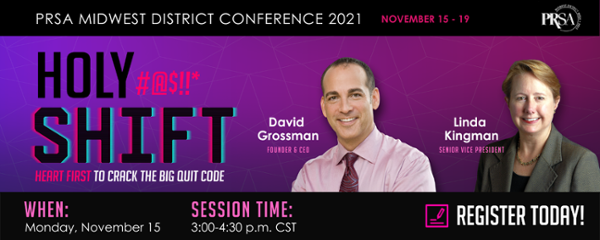
With the "Great Resignation" in full swing and the evolution of what employee engagement means today, one component that hasn’t changed is the value employees place on recognition.
Whether a pat on the back, spot bonus, or formal award, recognition can be a powerful tool in your communication arsenal. By showing appreciation and communicating a job well done in specific ways, you can enhance team performance and motivate employees to take their work to the next level.
4 Questions to Consider
Recognition can take many forms, so start by asking yourself:
- What’s a critical behavior you want to see more of? What strategic priority or company value do I want to drive or accelerate focus on?
At the heart of recognition, we want to make employees feel appreciated, and that is often more meaningful when we tie our recognition to the bigger organizational picture. Think about your goals and the company's strategic framework to decide if there’s a concept you could build your recognition around and simultaneously reinforce a core message.
It’s often said that what gets measured is what gets done – that’s true for recognition, too: what gets rewarded is what you’ll most likely see more of.
- Is there a specific time of year that team members are called upon to meet heightened demand and could benefit from extra acknowledgment of that hard work?
This would be in addition to a steady drumbeat of recognition throughout the year. No matter what you decide is the best cadence for formal recognition, remember that informal recognition can happen year-round in the form of a personal word or written note of thanks and appreciation expressed during a team huddle. The key is to do it frequently, sincerely, and in as specific a way as possible. - What type of recognition would best resonate with your unique workforce or the individual you are honoring? Is it a public acknowledgment? Private? A celebration event? Tangible? Intangible?
In recognition, one size does not fit all. One individual might value a public display of gratitude during a meeting, while others might prefer a simple, private word of appreciation. Be aware of how your employees prefer to be recognized or what’s culturally appropriate. - How can I best structure recognition so members of the team are inspired to participate and feel engaged in the process?
Crowdsourcing can certainly be applied to award programs as well. Who better to recognize everyday heroes than those who work side-by-side with them on a daily basis? Consider building excitement and involvement by taking nominations by email or ballot; there are also apps available that allow teams to formally give one another kudos.
3 Must-Haves for Recognition
Once you’ve thought through the answers to these questions, you can begin to formulate the structure of your recognition. In doing so, remember these key guidelines:
- Make it personal
- Make it meaningful
- Make it specific
When you do that, the recognition not only resonates with the recipients, but it helps others to understand expectations and commit to demonstrating similar behaviors. Remember, what gets rewarded is what gets done.
Think about a time when you were acknowledged for your hard work. What about the recognition stands out in your mind and why?
—David Grossman
Join David Grossman and Linda Kingman on Monday, Nov. 15, 3:00-4:30 p.m. CST and get more practical, actionable strategies, tips, and tools for meeting an unprecedented leadership litmus test by leading with “Heart First” to engage and retain employees. Click below to register today!


Comments on this post